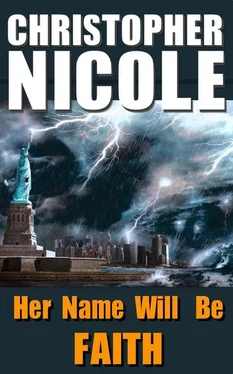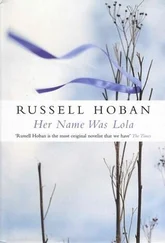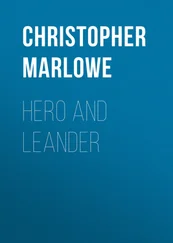“I guess she wanted to live one way, and I another.”
“I’m sorry. Are you divorced?”
He nodded.
“Would that be why you left Florida?”
“I left Florida because NABS offered me twice as much as I was getting there.” Then he gave a crooked grin. “Don’t you believe it: I was running like hell.”
They gazed at each other for several moments, then she swallowed her last mouthful. “That was lovely.”
“Dessert? Coffee? They do a great cappuccino.”
“I really should be getting back.”
“But we haven’t talked about hurricanes, yet.”
“Heavens! We haven’t, have we? Well, perhaps, if you do recommend the cappuccino…”
Richard signaled the waiter.
“So,” she said. “Can you tell me, as simply as possible, what a hurricane actually is?”
“Well, as simply as possible, it is a depression which has gotten out of hand. Depressions are caused by warm air rising, which warm air will always do: think of the steam from your kettle. Nature, as you know, abhors a vacuum, so when warm air rises, cold air rushes in to replace it. Even well up in the north it can do this at quite a speed, but being cold air the whole system tends to collapse fairly quickly. In the sub-tropics, when the water temperature heats up, the air starts to rise, and is replaced by only slightly cooler air. Thus this new air isn’t cold enough to quash the system; it merely heats up and rises itself. So we have a continual spiral of rising air, which, if the other conditions are right, just gets faster and faster, like a top gaining speed instead of losing it. You could think of a hurricane as a gigantic tornado or waterspout, only they can be hundreds of miles across. And of course they are generating winds of Force Twelve and up.”
“Why do you say Force Twelve? What does that mean?”
He grinned at her as he stirred coffee. “I think you know that one.”
“Maybe I do, but tell me anyway. So I can quote you.”
“Well, it’s just a reference system invented by a British admiral named Beaufort about 150 years ago. So it’s called the Beaufort Scale. It divides up wind speeds into readily recognizable categories. For instance, zero on the scale is flat calm. Force Three is a light breeze, say 12 knots: that’s when you would get your first whitecaps at sea, and your first tree moving on land. Small trees, anyway. Force Five is a pretty good breeze, and when you have Force Six, which is around 25 knots, you have spray flying and big trees whipping to and fro. It’s the sort of wind you’d have difficulty walking against. After that you get into storm territory. Force Eight is a gale, around 35 knots. That can be pretty serious at sea, at least to small craft. Yachts have to reef. Then Force Ten is a storm, 50 knots. Now that really is something. You have big waves, twenty or thirty feet from trough to crest. Even good-sized ships can get into trouble in that type of situation. And on land you have some trees coming down, and chimney pots and that sort of thing.”
“And Force Twelve is a hurricane.” Jo gazed at him over the rim of her coffee cup. “How strong is that?”
“64 knots, or 75 miles per hour.”
“And that’s dangerous to everybody.”
“It’s dangerous. But 75 miles an hour is only what we call a Category One storm, and its damage effect, in hurricane terms, is minimal.”
“That’s right,” she said. “Back at the studio you mentioned that Anita was Category Four. How strong is that?”
“That is strong,” he said. “You see, although all winds of more than 75 miles per hour are hurricanes, it is possible to have winds twice that speed. So to differentiate between what we might call an ordinary hurricane and a real killer storm, the Weather Bureau divides them up into categories, depending on wind strength. Category One contains winds of 74 to 95 miles an hour. Okay, that’ll knock down a few trees and signs. Category Two, up to 110 miles an hour, knocks over mobile homes and can get under poorly constructed roofs. Category Three has winds of up to 130 miles an hour. Now you’d have big trees coming down and some roofs coming right off. But Category Four can reach 150 miles per hour, and that’s more than double the speed of an ‘ordinary’ hurricane. It’s real nasty. You really want to be battened down tight in those circumstances, or your roof will almost certainly go.”
“Sounds horrific. A 150-mile-an-hour wind. Hard to imagine.”
“It’s not the ultimate.”
“You mean there are stronger winds?”
“There have been. Not very often, thank God. In fact only about four this century, at least in the Western Atlantic.”
“And that’s Category Five, right?”
“Right. When you get that, whole buildings, and I mean properly constructed buildings, can get blown down.”
“But what would cause a Category Five to happen?”
“Well…” he signaled for fresh cappuccinos. “Nobody actually knows. Nobody actually knows enough about why hurricanes spawn at all. Sure we know they won’t form unless the water temperature is high enough. But that’s not to say they will appear the moment the temperature reaches 26 Centigrade. Just as we don’t know why they sometimes fizzle and why they sometimes keep on building. The jet streams have a lot to do with it. Those are the upper atmosphere winds, which are very strong but have nothing to do with barometric pressure or heat; they’re caused by the earth’s rotation. If they happen to be blowing over where a hurricane is forming, they can scatter the rising air before it becomes a system. Again, when a hurricane hits land it tends to dissipate, because land temperatures aren’t as stable as those of the sea.”
“Is that why, after they have tracked west across the ocean and reached America, they generally turn back?”
“Not really. That is part of the earth’s rotation also.”
Jo regarded her notes. She had enough for a small book. “That’s all Just great,” she said. “But tell me one thing more, Richard: how dangerous are hurricanes? I mean, compared with earthquakes or volcanoes or things like that? I know they can push up tidal waves…”
“We call them storm surges,” he murmured.
“…in places like Bangladesh, and drown a lot of people, but those are exceptional circumstances, surely, with vast low-lying areas exposed to the sea? The porter in my apartment says his father told him about the ’26 hurricane down in Florida, which killed a lot of people.”
“Over four hundred,” Richard said. “Florida was much more sparsely populated then than now. Jo, in terms of energy release, a hurricane is the most destructive of all natural phenomena, and that includes volcanoes and earthquakes. Just for example, even a small hurricane generates as much energy as several atomic explosions added together. There is no radiation, of course, and no searing heat. But it is still the mightiest force known to nature.”
“I hadn’t realized that.”
“Very few people do.”
“So it’s the wind which causes the most damage.”
“Oh, no. It’s the water. Figure this: a Category One storm will push up a storm surge of maybe five feet above normal water level. Now, remember, it is not a wave, nor is it a rise of tide. It is a surge, which may arrive several hours before the wind and start flooding low-lying coastal areas, and then continue for as long as the wind is blowing. And this surge gets bigger with every increase of wind. A Category Three storm could have a storm surge of as much as twelve feet above normal.”
“And Category Five?”
“The highest storm surge we have recorded is about 20 feet above normal. But it could go higher than that. And this, of course, is on top of the tidal range, which could be a big one if it was a spring tide, so that on top of the surge there will be waves of as much as 50 feet high, breaking.”
Читать дальше












